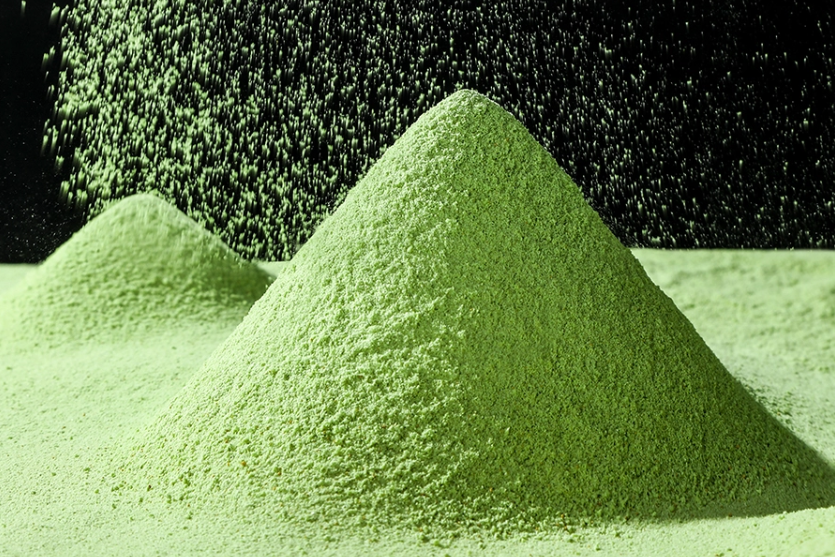What is rice vinegar ?
Rice vinegar is made from fermented rice. The sugars in the rice are converted into alcohol (rice wine) and then, through a second, bacteria-laden fermentation process, into the acid we know as vinegar. The result is often much less acidic and milder than straight distilled white vinegar or those made with grape-based wine or malt, making it a subtle addition to salad dressings, pickles, marinades, or lightly drizzled over stir-fried vegetables. .
Chinese white rice vinegar (mǐ cù, 米醋) is made from fermented rice and is less acidic than Western distilled white vinegar. It tastes closest to cider vinegar, but is a bit milder and doesn't have the fruity undertones that cider vinegar does. It can also vary from colorless/transparent (like water) to gold.
Rice vinegar is made by further fermenting rice wine to create vinegar. That's why the ingredient is sometimes called rice wine vinegar. There is no difference between rice wine vinegar and rice vinegar except for the wording on the label!
This ingredient originated in China and became known in Japan in the IV-V centuries. It is a staple in Japan for seasoning rice for sushi, making dressings, etc. In Southeast Asia, lime and tamarind are used more often than vinegar as an acid component in foods. As a result, most of the brands you'll find in the store are Japanese, Chinese, or Taiwanese.
chinese rice vinegar
types of vinegar
There are three main types of rice vinegar: black, red, and white. Black rice vinegar is made from glutinous or sweet rice, although millet or sorghum can be used instead. Dark in color, it has a deep, almost smoky flavor, and is milder and sweeter than the red and white types. The aging process also gives black vinegar a robust and unique fragrance. Black rice vinegar is very popular in southern China, where chicklang vinegar (Zhenjiang vinegar), the best black rice vinegar, is made. Another popular black rice vinegar is Shanxi Aged Vinegar, a famous traditional Chinese vinegar that dates back 3,000 years. It is made from different types of grains, such as rice, sorghum, barley, bran, and straw, and is fermented using solid-state fermentation techniques. The color of Shanxi Aged Vinegar is dark reddish brown, while its flavor is mild, sour and slightly sweet.
Red rice vinegar is also dark in color but lighter than black rice vinegar. Its flavor has an intriguing combination of tart and sweet. Red rice vinegar can be used as a substitute for black vinegar by adding a bit of sugar. It makes a delicious dipping sauce and can also be used in noodles, soups, and seafood dishes.
White rice vinegar is a colorless liquid that has a higher vinegar content. Although it tastes similar to regular vinegar, it is less acidic and milder in flavor than white wine vinegar. There is also a hint of sweetness that comes from the sticky rice. The higher vinegar content of white rice vinegar makes it the best choice for Cantonese-style sweet and sour dishes and for pickling vegetables. It generally works well in stir-fries.
There are also seasoned varieties of Chinese rice vinegar, which may contain sugar, corn syrup, MSG, or salt, as well as other natural flavorings.
Chinese Rice Vinegar Uses
This vinegar is a common ingredient in recipes for Asian marinades, sauces and salad dressings, as well as vegetable pickling mixes. Chinese rice vinegar can be used on its own as a simple seasoning for salads, vegetables, and rice, and some of the sweetened or flavored varieties can be used to make a delicious summer drink.
Cooking with Chinese Rice Vinegar
Chinese rice vinegar can be blended into a recipe uncooked, as a salad dressing or marinade, or cooked into a sauce or stir-fry. Although it's a natural pairing with other Asian ingredients like soy sauce and sesame oil, Chinese rice vinegar can be a part of Western recipes, as the tartness and subtlety are a welcome addition to a variety of dishes.
What does this taste like?
Chinese rice vinegar is less acidic than white, balsamic, and red wine vinegars. It has a milder, sweeter flavor than Western vinegars, except for black vinegar, which has a deeper, more complex flavor.
Japanese rice vinegar
types of vinegar
white rice vinegar
This light to yellow colored vinegar has a smooth and delicate flavor, with prominent but subtle acidity and just a hint of sweetness. It is this delicacy of flavor that makes Japanese rice wine vinegar so versatile in Japanese cooking. Rice vinegar is used in salad dressings and sauces as a flavor balancer, in sushi rice as a seasoning, in pickles as the primary pickling agent, and in marinades for meats and seafood as an odor eliminator and tenderizer.
brown rice vinegar
Light to dark brown in color, brown rice vinegar, or black rice vinegar (a literal translation from Japanese kurozu), is made from rice with the rice germ and bran intact (white rice grinds the rice germ and the saved). Because the rice germ and bran contain so many nutrients, brown rice vinegar is said to be much more nutritionally dense than white rice vinegar. In addition to being used in cooking, brown rice vinegar is also drunk neat or diluted with other flavors as a health drink.
uses of vinegar
Here are some of the main ways rice vinegar is used in Japanese cooking.
sushi
If you've ever wondered how to make sushi rice, it's easier than you think. All you need to do is add rice vinegar, sake, salt, and sugar to the boiled Japanese rice and mix it together. Sushi vinegar is a mixture of rice vinegar, sake, salt and sugar, which serves to further facilitate the process of making sushi rice. This vinegar in the rice prevents fresh fillings from spoiling, as well as giving the rice a refreshing flavor that balances out most standard sushi fillings nicely.
To drink
The Japanese often drink vinegar straight, in the belief that it will be beneficial to their health. If you don't like to drink plain vinegar (even mild vinegar like rice vinegar), you can dilute the vinegar with water or mix it with sweet juices or honey. In fact, adding vinegar to some fruit juices works well as a way to reduce their sweetness.
Cook
In addition to adding a subtle hint of acidity to slow-cooked foods (nimono) and salad dressings, the acids in rice vinegar are good at tenderizing food and removing odors from meat and seafood, making it an ideal ingredient for marinades. Like vinegar, it is a great pickling agent for making tsukemono (Japanese pickles), and can similarly be used to make sunomono; Semi-pickled dishes where the vinegar acts as a seasoning itself.
ponzu
Ponzu is a popular vinegar-based sauce or dressing served with sashimi, tataki (lightly grilled and sliced meat or fish), and hot pots of nabe. It is made from a combination of rice vinegar, mirin rice wine, dashi, and citrus fruits, and is often mixed with soy sauce. Its strong and surprising flavor makes it the perfect counterbalance to the delicately flavored raw (or lightly cooked) foods with which it is often served.
Benefit
Rice Vinegar also contains: Potassium, Magnesium, Calcium, Phosphorus
Vinegar is also a good source of antioxidants. Darker vinegars are generally higher in antioxidants than lighter vinegars because they are less refined. Black rice vinegar is particularly high in antioxidants that can help reduce damage to cells.
Potential Health Benefits of Rice Vinegar
Rice vinegar is a rich source of vitamins and minerals. However, the same things that make vinegar so powerful can also create health complications for people with certain medical conditions.
So far, research has found a number of potential health benefits from drinking or eating rice vinegar:
Control blood sugar
All types of vinegar affect blood sugar levels. Many people with diabetes find that consuming a small amount of vinegar with or right after a carbohydrate-rich meal can help reduce insulin spikes. As a result, consuming rice vinegar as a salad dressing or other condiment may help people with diabetes control their blood sugar more effectively.
lower cholesterol levels
Regular consumption of acetic acid from vinegar as part of your diet can help lower your cholesterol levels. While more study is needed, early trials suggest that regular consumption of small amounts of vinegar may lower cholesterol and triglyceride levels. This can reduce your risk of heart disease, liver disease, and coronary events.
Helps with weight loss
Some studies suggest that adding a small amount of vinegar to your daily diet may also aid in weight loss efforts. In general, consuming a tablespoon or two of vinegar with a meal seems to help people lose weight over time. According to these studies, weight loss occurs because vinegar increases satiety and reduces appetite. This reduced appetite leads to less caloric intake throughout the day and results in gradual weight loss over time.






Leave a comment
All comments are moderated before being published.
This site is protected by hCaptcha and the hCaptcha Privacy Policy and Terms of Service apply.